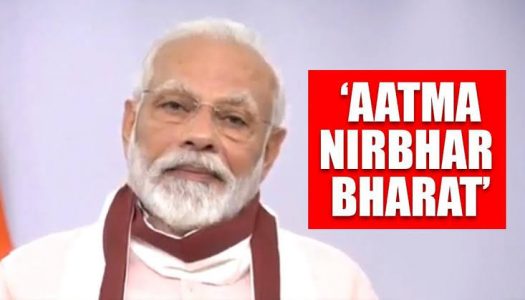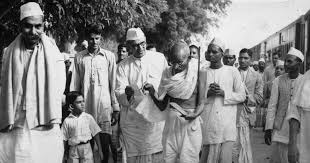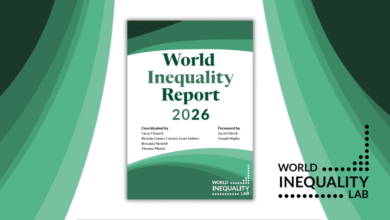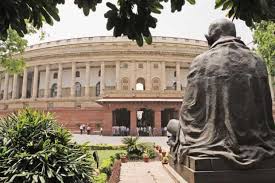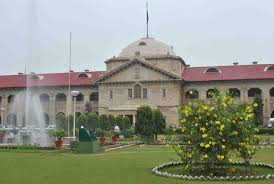Mahatma Gandhi National Rural Employment Guarantee Act :When Minimum is interpreted as Maximum
By Anurag Singh and Sandeep Pandey
Atma-nirbhar (self-reliant) India must perform on several fronts in order to vindicate itself on its adopted path in the current economic crisis coupled with crippling pandemic, two of which are Education and Employment. As a matter of considerable advantage, two recent historic social legislations offer a means to overcome the times of crisis – Mahatma Gandhi National Rural Employment Guarantee Act (MNREGA), 2005 and Right to Education Act, 2009. This article attempts to analyze as to how these tools of social empowerment are being diluted due to the inept interpretations by the executive.
MNREGA, with ultimate objective of poverty alleviation, provides for a demand driven legal guarantee of 100 days of employment with statutory provisions of allowances and compensation, which are provided in cases of failure to provide work on demand and delays in payment of wages for work undertaken. However, these provisions are not interpreted literally and purposively, on the contrary they are effected with a conservative and strait-laced attitude. Section 3(1) of this Act enjoins the government to ‘provide to every household whose adult members volunteer to do unskilled manual work not less than one hundred days of such work in a financial year in accordance with the Scheme made under this Act.’ The words ‘NOT LESS THAN’ make it clear that hundred days of employment is the minimum entitlement which the Parliament provided for, leaving for the rest to the governments to endeavour as the resources permit. But this ‘minimum’ guarantee is understood as ‘maximum’ both by the government and administration in particular and public in general. The yearly average number of days of employment provided per household has remained around 45-50 since 2016-17, when the scheme began to be implemented. It is not that the demand was not there. It is just that the bureaucratic machinery was not willing to honour the spirit of the Act. Demands remained unfulfilled and unemployment allowances, when demand was not met within 15 days, according to the Act were hardly taken seriously.
It is not the case that this hundred days of employment is never increased, but only in exceptional circumstances like natural calamities with last exercise in Kerala floods in January 2020. Here, we need to have a look at Section 3(4), which reads ‘The Central Government or the State Government may, within the limits of its economic capacity and development, make provisions for securing work to every adult member of a household under a Scheme for any period beyond the period guaranteed under sub-section (1), as may be expedient.’ The power to provide employment above hundred days depends on ‘economic capacity and development,’ i.e. it shall be increased regularly as the country moves towards economic prosperity and development else it will lead to uneven growth with islands of prosperity in the hinterland of misery. The country is not in the same economic position as it was in 2006, when the scheme was launched. It is only fair if its dividends are distributed to the less privileged. This should reflect in the increase in budgetary allocation under MNREGA, which has only seen a continuous decline. Budget 2020-21 also saw a dip of 13%. Although additional Rs. 40,000 crore has been allocated for MNREGA in Atma Nirbhar Bharat Abhiyan Package, no decision till date has been taken to increase the minimum guarantee of 100 days of employment.
Right to Education Act, 2009 also met a similar fate. Much before the enactment, Supreme Court recognized Right to Education as fundamental right in Mohini Jain v State of Karnataka in 1992. Free and compulsory education till the age of 14 years was considered to be a fundamental right in Unni Krishnan, J.P. v State of Andhra Pradesh in 1993 wherein the court held that Article 45 had acquired the status of a fundamental right. Consequently, it took a decade when Parliament enacted 86th Constitutional Amendment Act, 2002, which inserted Article 21A directing the State to provide free and compulsory education to all children of the age of six to fourteen years. It took another 8 years for Parliament to formulate a law known as Right of Children to Free and Compulsory Education Act, 2009 (RTE Act). Now if we look into Section 12(1)(c) of the said law, it reads:
”……. to the extent of at least twenty-five per cent of the strength of that class, children belonging to weaker section and disadvantaged group….”
From the plain language, AT LEAST 25% makes it clear that the legislative intent of 25% is the ‘minimum’ entitlement but the same is considered as ‘maximum’ both by the education department and private educational institutions. State in India follows a system of registration and lottery in admissions under RTE quota wherein the seats available in each private school are capped and in case a student fails to secure seat in the desired school in the lottery, his claim of seeking education is altogether denied.
In Uttar Pradesh the Basic Education Department on its website used for admissions under Sec. 12(1)(c) of the Act shows 2,73,070 seats available, which is 25% of total seats with private schools, which itself is an underestimate as schools don’t report the actual numbers. But this year only 59,656 students were alloted these seats, which is merely 22% of the available. Even though third round of admissions are pending but it is unlikely that final allotments will be anywhere near the total mapped seats. 4,877 children were rejected in Lucknow alone for the reason ‘seats exhausted.’ Actual admissions secured will be even less as some schools like the City Montessori School in Lucknow don’t honour these admissions. The entire process is a complete mockery of the the fundamental right of children guaranteed under the Constitution.
This is the clear violation of the Article 21A besides the RTE Act, where State is under obligation to provide FREE and COMPULSORY EDUCATION. For students who are unable to secure admission as part of the lottery under RTE Act, it becomes the constitutional duty of state to secure their admission in any of the other neighbouring private or public school, whatsoever. Can a fundamental right of a child be decided by a lottery? Article 21A should determine content and parameters of the right to education, where state has a significant role to play.
In nutshell the State must honour the command of Parliament with literal and purposive interpretation of the statute, else the objectives of ‘Justice: Social, Economic and Political,’ ‘Equality of status and opportunity’ and ‘dignity of the individual’ flowing from Preamble shall remain on paper.

(Anurag Singh is LLB student at Lucknow University)

(Sandeep Pandey is a social-political activist.)

